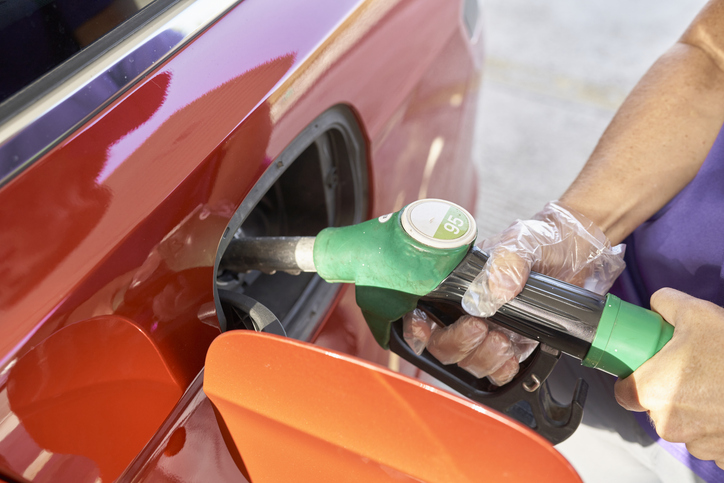The Ministry of Petroleum and Natural Gas has reaffirmed its commitment to the Ethanol Blending Programme, addressing concerns about the impact of 20% ethanol-blended petrol (E-20) on vehicle mileage and longevity. In a detailed response issued on August 11, the ministry clarified that biofuels like ethanol are critical to India’s transition to cleaner energy, aligning with the country’s Net Zero commitment by 2070 under its Nationally Determined Contribution (NDC). A NITI Aayog study highlighted that sugarcane-based ethanol reduces greenhouse gas emissions by 65% and maize-based ethanol by 50% compared to petrol, significantly lowering environmental impact.
The ministry emphasized that the ethanol blending initiative has delivered substantial economic and social benefits. Over the past 11 years, from Ethanol Supply Year (ESY) 2014-15 to July 2025, the programme has saved over Rs. 1.44 lakh crore in foreign exchange, substituted 245 lakh metric tonnes of crude oil, and reduced CO2 emissions by approximately 736 lakh metric tonnes—equivalent to planting 30 crore trees. At 20% blending, payments to farmers are expected to reach Rs. 40,000 crore this year, with foreign exchange savings of around Rs. 43,000 crore. The initiative has also boosted rural economies, eliminated sugarcane arrears, improved maize cultivation viability, and contributed to reducing farmer suicides, particularly in regions like Vidarbha.
Addressing concerns about E-20’s impact on vehicle performance, the ministry noted that these were anticipated as early as 2020 and thoroughly examined by an Inter-Ministerial Committee (IMC) of NITI Aayog, supported by research from the Indian Oil Corporation Limited (IOCL), Automotive Research Association of India (ARAI), and Society of Indian Automobile Manufacturers (SIAM). E-20 fuel, with its higher octane rating of approximately 108.5 compared to petrol’s 84.4, offers better acceleration, improved ride quality, and up to 30% lower carbon emissions than E-10 fuel. The higher octane enhances performance in modern high-compression engines, while ethanol’s heat of vaporization improves air-fuel mixture density, boosting efficiency. Regular petrol in India, now at a Research Octane Number (RON) of 91 to meet BS-VI standards, has been further improved to RON 95 with E-20, enhancing anti-knocking properties.
The ministry dismissed claims of significant mileage reduction with E-20, stating that fuel efficiency depends on multiple factors, including driving habits, vehicle maintenance, tyre pressure, and air conditioning use. Extensive consultations with SIAM and major automakers confirmed that efficiency drops, if any, are marginal. Many vehicles have been E-20 compatible since 2009, and no significant efficiency issues have been reported. The ministry also highlighted Brazil’s successful use of E-27 fuel for years without issues, noting that automakers like Toyota, Honda, and Hyundai operate there seamlessly. Safety standards for E-20 are well-established through Bureau of Indian Standards (BIS) and Automotive Industry Standards, with minimal concerns. Only older vehicles may require inexpensive replacements of certain rubber parts or gaskets during routine servicing.
Responding to claims that E-20 should be cheaper than non-blended fuel, the ministry clarified that ethanol prices have risen over time. As of July 31, 2025, the average procurement cost of ethanol is Rs. 71.32 per litre, including transportation and GST, compared to Rs. 57.97 for C-heavy molasses-based ethanol and Rs. 71.86 for maize-based ethanol in ESY 2024-25. Despite higher costs, oil companies have maintained the blending mandate to ensure energy security, support farmers’ incomes, and promote environmental sustainability.
The ministry also debunked misinformation suggesting that insurance companies would not cover vehicle damage due to E-20 use, calling such claims baseless and clarifying that E-20 usage does not affect insurance validity. Automakers are engaging with vehicle owners to provide support, with authorized service stations equipped to handle any necessary tuning or parts replacement.
On future plans, the ministry stated that any move beyond E-20 would involve careful calibration and extensive consultations with automakers, feedstock suppliers, R&D agencies, oil companies, and ethanol producers. The current roadmap commits to E-20 until October 31, 2026, with decisions on further blending to be based on the IMC’s forthcoming report and stakeholder inputs. The government remains dedicated to promoting sustainable fuel options while ensuring minimal consumer impact, reinforcing ethanol blending as a cornerstone of India’s energy transition strategy.














